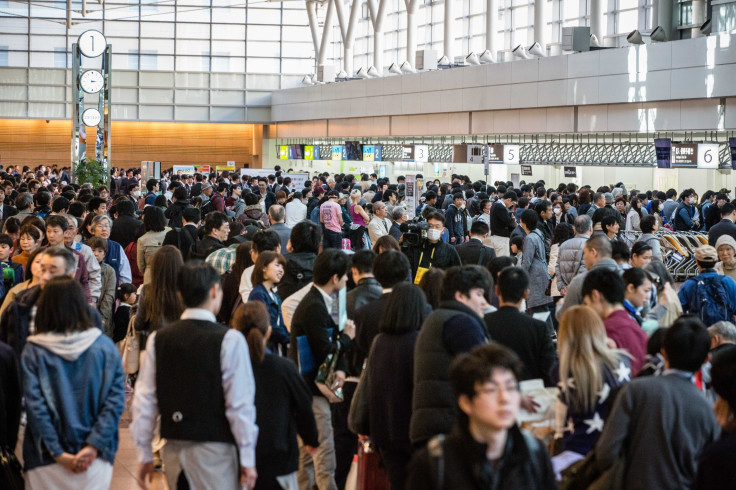Japan Population Crisis: After Massive Yearly Drop, Rate Of Decline Fastest On Record

Japan's population saw an unprecedented decline last year, the Japan Times reported Wednesday. The country's population, excluding foreign nationals, fell at its fastest pace ever, down 271,834 to 125,891,742 from the year prior as of Jan. 1.
That's according to government figures that have tracked the population since 1968. The most recent data released Wednesday marked the seventh consecutive year of decline, with the population dipping under 126,000,000 for the first time in 17 years, according to Japan's Ministry of Internal Affairs and Communications.
The foreign national population did increase by more than 5 percent. But the Japanese population fell in 41 of Japan's 47 prefectures. Tokyo saw the biggest rise in population but the overall drop is troubling for the country.
"The shrinkage of the Japanese population may add to pressure on Prime Minister Shinzo Abe’s government as it frantically tries to slow the trend," the Japan Times wrote.
The trend might be hard to slow, since last year births saw a slight uptick but were still outpaced by deaths, meaning there was a "birth deficit." Japan's population is aging, with more than a quarter aged 65 or older and just 12.8 percent 14 years old or younger.
This is not a phenomenon without warning. The most recent official Japanese census in 2015 showed a stark reality about the country's overall population — it had shrunk by nearly 1 million in just five years. That came after "years, if not decades, of warnings about Japan's aging population and its low birth rate," wrote the Washington Post in February.
Abe has said it is a priority for Japan's population not to fall below 100 million people. Government projections have suggested that by 2060 some 40 percent of Japanese citizens will be older than 65 and the general population will have shrunk by one-third. Abe has made it a priority to up the birth rate to 1.8 children per woman, up from a rate of just 1.4.
© Copyright IBTimes 2024. All rights reserved.





















